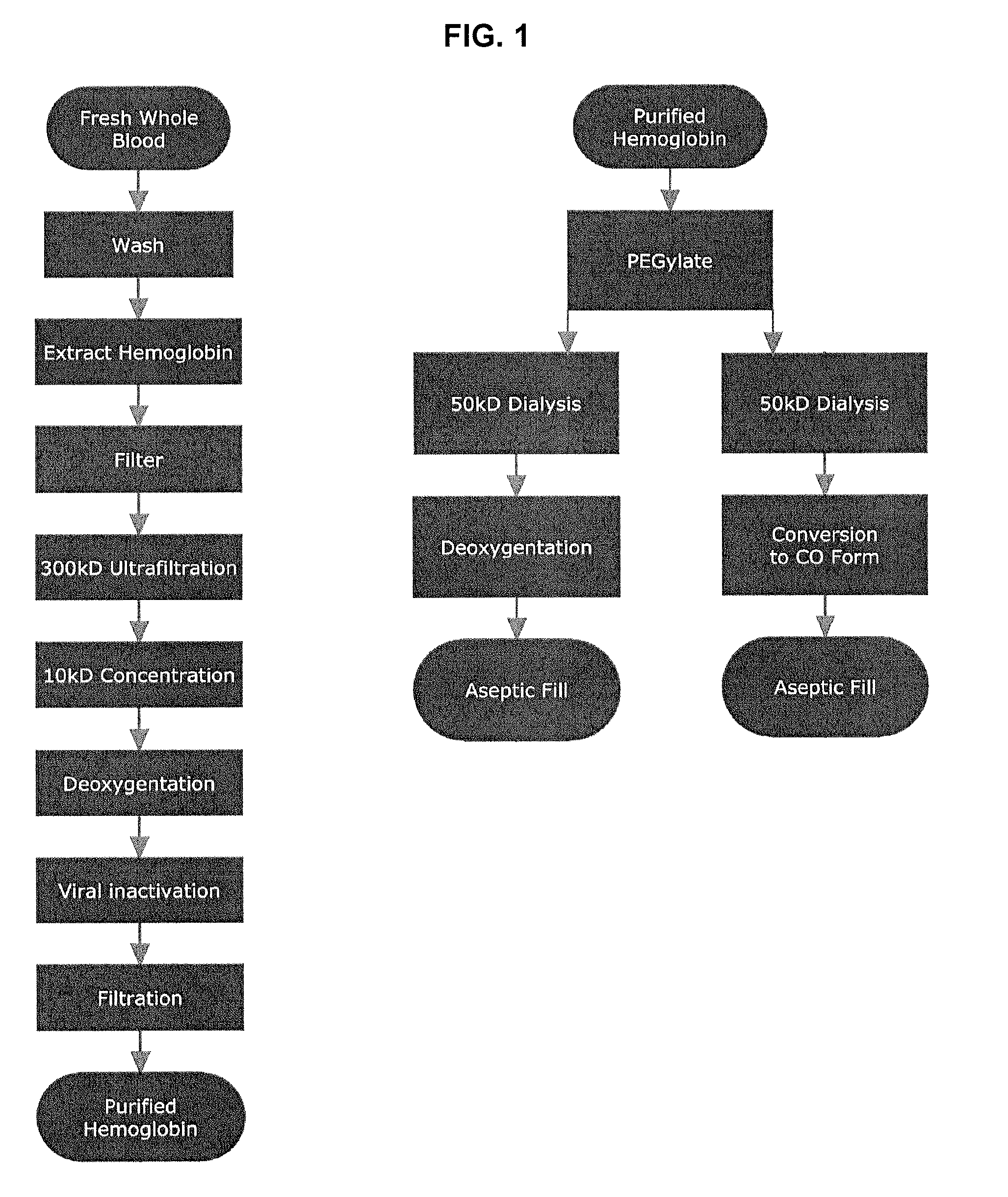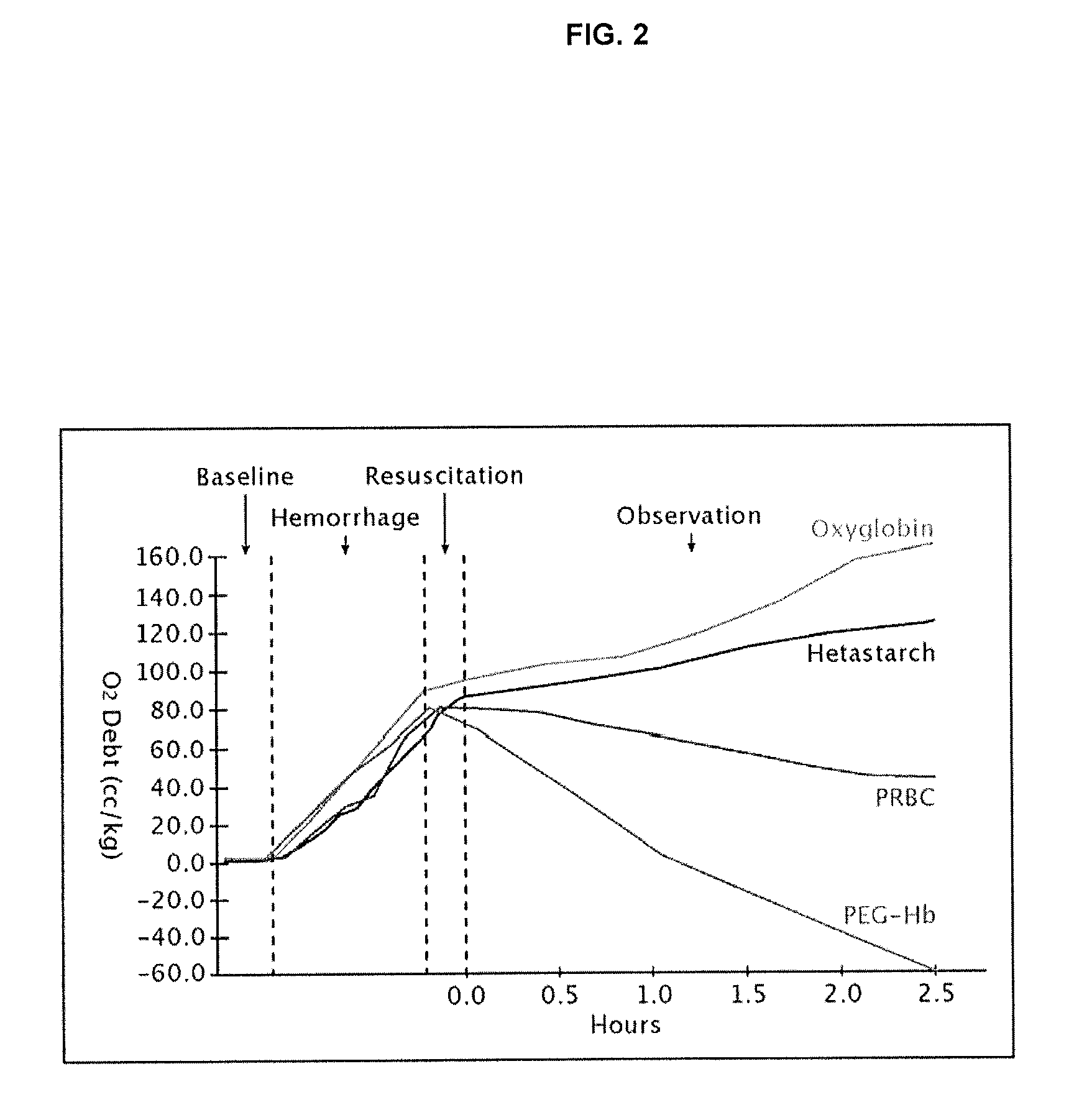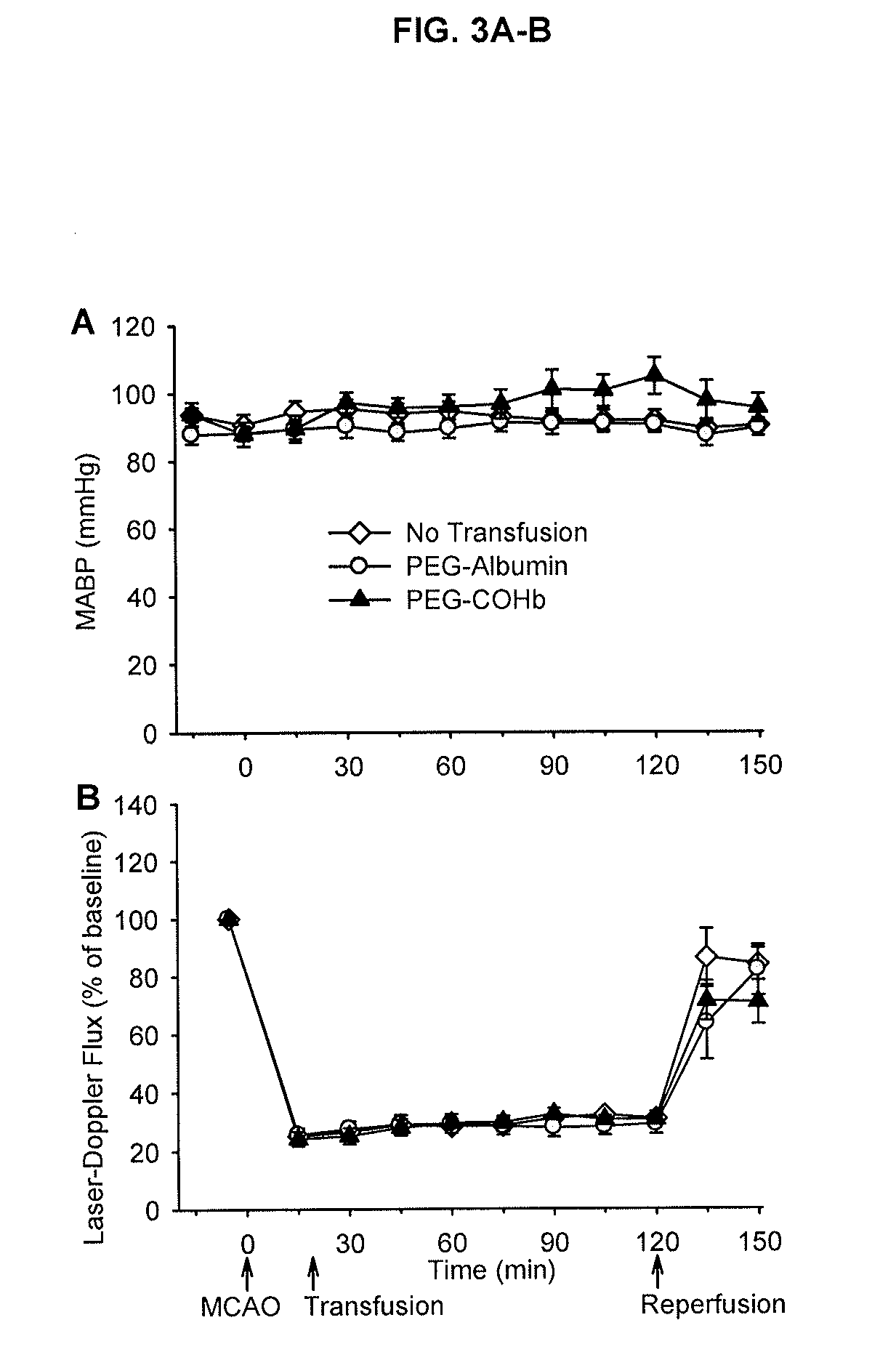Hemoglobin compositions
a technology of hemoglobin and composition, applied in the field of hemoglobin composition, can solve the problems of affecting the normal clearance process, and inflammatory and physiological aberrations, and achieve the effects of restoring tissue oxygenation, enhancing tissue oxygenation, and restoring mean arterial pressur
- Summary
- Abstract
- Description
- Claims
- Application Information
AI Technical Summary
Benefits of technology
Problems solved by technology
Method used
Image
Examples
example 1
Purification of Hemoglobin
[0276]This first step involves washing the blood cells free of plasma. On the bench scale this was accomplished by repetitive washing, centrifugation and decanting. This process appears more efficient than the vertical continuous flow centrifuge.
[0277]The red cells are washed 4× with buffer (1.2% NaCl with 10 mM phosphate, pH 7.8). The red cells are then lysed (the hemoglobin is extracted without true cell lysis) by the slow addition of 1.5 volumes of WFI over a period of 2 hours. The status of lysis (again, hemoglobin extraction) is monitored by sampling conductivity until it is in the range of 5.50-7.00 μS. The % Hb is determined using a Radiometer OSM3 Hemoximeter. The Osmolality is also tested and is in the range of 130-150 mOsmol. Once hemoglobin extraction is complete the content is pressure filtered through a 1 μm cellulose based depth filter, followed by 0.45 / 0.2 μm sterile polysulfone based filter into a second tank which serves as the reservoir fo...
example 2
Rationale
[0295]In the murine model of hind limb ischemia induced by femoral artery ligation, mice with diabetes display significantly impaired restoration of blood flow and angiogenesis responses compared to non-diabetic animals. In this study, we tested the hypothesis that administration of Sanguinate would facilitate restoration of blood flow and angiogenesis.
[0296]Method and Results:
[0297]C57BL / 6 mice at age of 6 weeks were rendered diabetic with streptozotocin (stz) and at age of 12 weeks were subjected to FA ligation followed by administration of Sanguinate (20 ml / kg / day) via intraperitoneal (i.p.) injection daily for 4 weeks. Vehicle treated diabetic mice received i.p. injection with equal volumes of 1×PBS daily. Diabetic mice treated with Sanguinate displayed significantly improved blood flow ratios (ischemia / sham) by laser Doppler analysis on day 28 after FA ligation compared to vehicle treated group (63.36±5.83 vs 44.39±4.13 BFR (%), n≧9, p=0.019). Immunohistochemistry stai...
example 3
[0314]The effect of transfusion of PEGylated CO-hemoglobin (PEG-COHb) was evaluated in anesthetized rats subjected to 2 hours of focal cerebral ischemia and 1 day of reperfusion. PEG-Hb was stored in the carboxy state (PEG-COHb) to provide a source of CO and reduce autooxidation and increase the shelf life. Transfusion of 10 ml / kg of PEG-COHb at 20 minutes of ischemia did not alter arterial blood pressure or increase red cell flux in the ischemic core. Plasma hemoglobin increased to only 0.6 g / dL, yet infarct volume was markedly decreased and neurological deficits were improved. Early topload transfusion of PEG-COHb protects the brain from ischemic stroke.
[0315]All procedures were approved by the Johns Hopkins University Animal Care and Use Committee. Anesthesia was induced in male Wistar rats (250-350 g) with 5% isoflurane and maintained with approximately 2% isoflurane via nose cone with spontaneous ventilation during surgery. Isoflurane concentration was decre...
PUM
| Property | Measurement | Unit |
|---|---|---|
| molecular weight | aaaaa | aaaaa |
| molecular weight | aaaaa | aaaaa |
| molecular weight | aaaaa | aaaaa |
Abstract
Description
Claims
Application Information
 Login to View More
Login to View More - R&D
- Intellectual Property
- Life Sciences
- Materials
- Tech Scout
- Unparalleled Data Quality
- Higher Quality Content
- 60% Fewer Hallucinations
Browse by: Latest US Patents, China's latest patents, Technical Efficacy Thesaurus, Application Domain, Technology Topic, Popular Technical Reports.
© 2025 PatSnap. All rights reserved.Legal|Privacy policy|Modern Slavery Act Transparency Statement|Sitemap|About US| Contact US: help@patsnap.com



